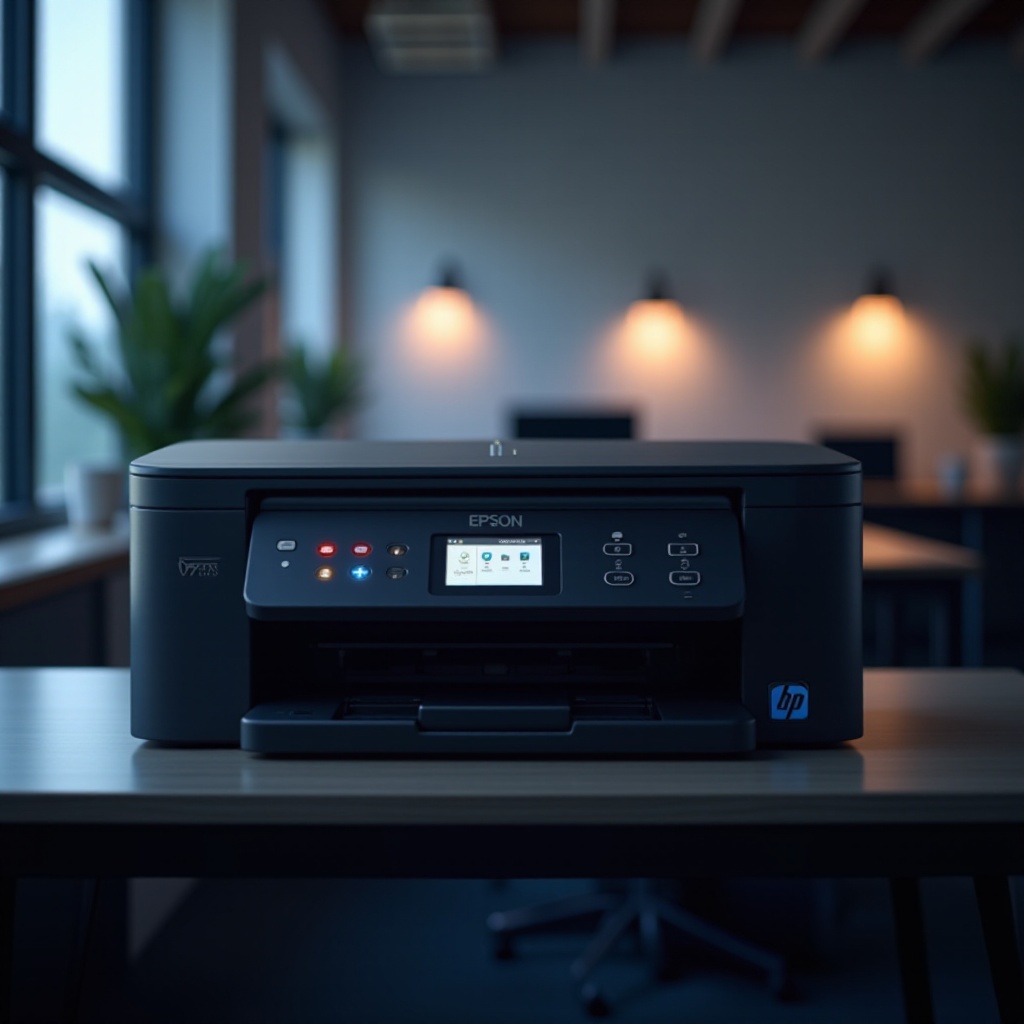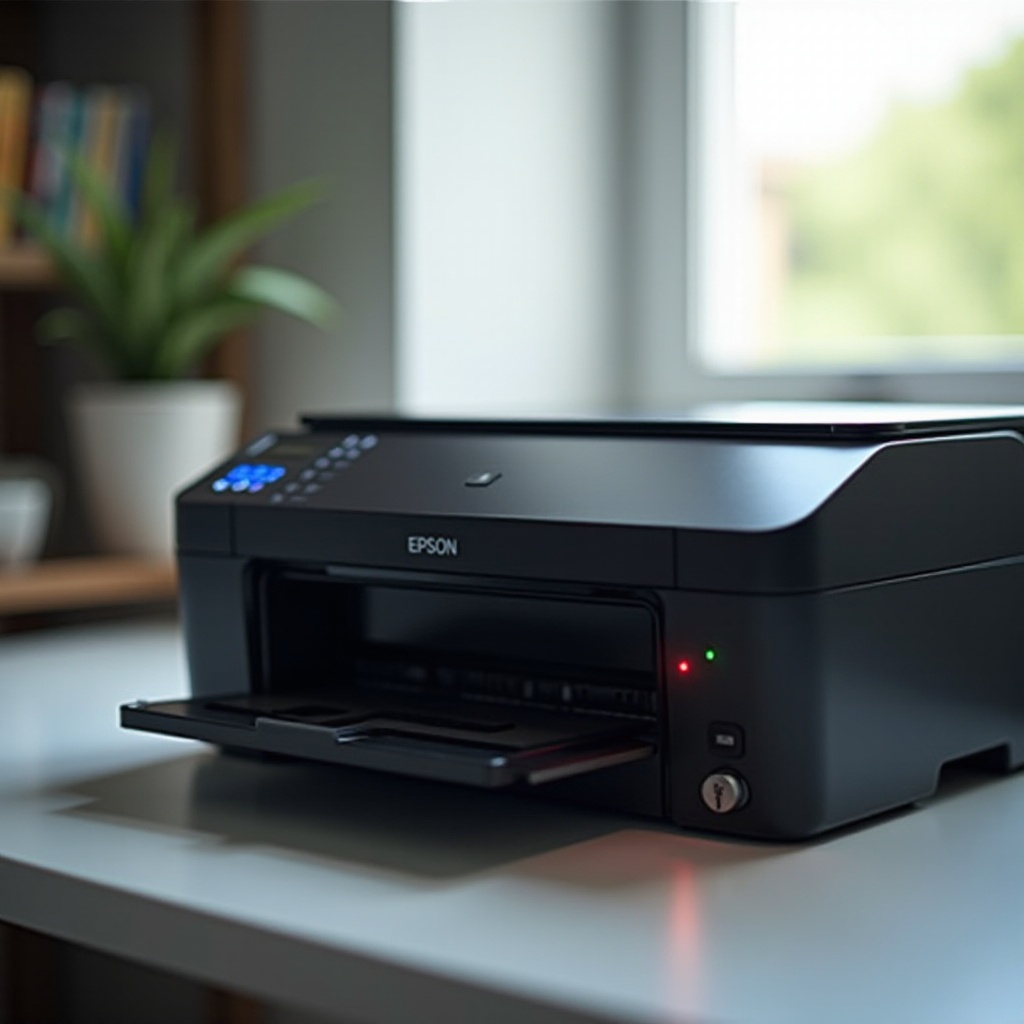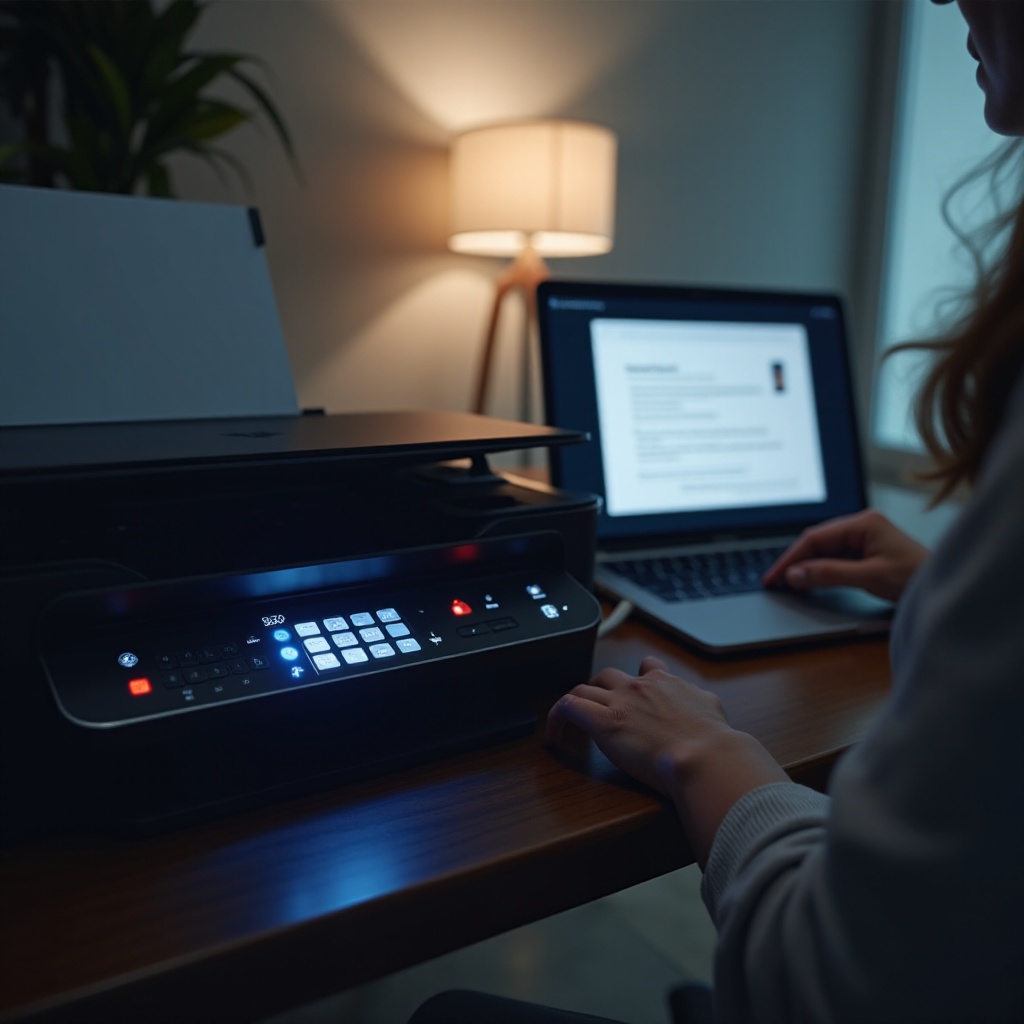Introduction
When you find your Epson printer flashing its lights unexpectedly, it can quickly become a source of frustration, especially if you’re in the middle of an important project. Understanding what these lights indicate is key to resolving the problem swiftly and effectively. While some signals are innocuous, others may warn of more severe issues that require immediate attention. This comprehensive guide will help you decipher Epson printer flashing lights by explaining their meanings and guiding you through troubleshooting steps. With the right information, you’ll ensure your printer functions efficiently, minimizing disruptions.

Understanding Epson Printer Flashing Lights
Epson printers communicate crucial information through their indicator lights, serving as a visual feedback mechanism about the printer’s status. These flashing lights can range from routine notifications to indicators of significant issues needing urgent attention. By familiarizing yourself with what each of these signals represents, you can greatly improve your ability to troubleshoot. Recognizing these indicators allows users to respond appropriately, decreasing the downtime caused by unresolved printer problems and maintaining consistent print quality essential for both personal and professional use. With this understanding, you’ll be equipped to tackle the issues as they arise.

The Meaning of Different Flashing Lights
Decoding the various lights on your Epson printer is an essential step in troubleshooting effectively.
Green Light: Normal Functions
A steady or flashing green light generally signifies that your Epson printer is operating under normal conditions. This indicates the printer is in standby mode, ready to execute commands, or is actively engaged in a printing task. Typically, no immediate action is required if the green light is on. However, if a transition from flashing green to another color occurs, this could indicate an error needing prompt attention.
Amber Light: Paper Jam Alerts
An amber flashing light usually suggests a paper jam or a similar problem related to the paper feed. This warning signal is your printer’s way of indicating that there’s an obstruction or issue with paper movement. Handling this matter quickly can prevent potential damage to the printer’s components and ensure your printing tasks can continue seamlessly.
Red Light: Ink or Cartridge Warnings
A flashing red light typically denotes a more serious concern, often linked to ink levels or cartridge installation issues. Such warnings necessitate checking and potentially replacing or reseating ink cartridges. Ignoring this alert may result in poor print quality or even printer errors. Timely intervention is crucial to keep your device functional.
Troubleshooting Epson Printer Flashing Lights
Encountering flashing lights on an Epson printer can be daunting. However, using a systematic approach can make troubleshooting much simpler.
Basic Troubleshooting Steps
- Restart the Printer: Power down the printer and restart it after a few minutes. This simple step can sometimes rectify internal errors causing the flashing lights.
- Check for Alignment Errors: Verify the proper alignment of all components, including paper trays, cartridges, and cables.
- Inspect for Updates: Keep your printer’s software current to avoid disruptions stemming from outdated software.
How to Address Paper Jam Issues
- Turn off the Printer: Switch off the printer before attempting to clear a paper jam to avoid any damage.
- Remove Jammed Paper: Carefully extract any visible paper from the feed and exit trays.
- Check for Residues: Look for and remove any small paper fragments inside the printer that could lead to future jams.
- Restart the Printer: Once cleared, turn the printer back on to check if the amber warning light has stopped flashing.
Resolving Ink Cartridge and Print Head Problems
- Check Cartridge Installation: Ensure that all ink cartridges are correctly installed and securely seated in their holders.
- Replace Empty Cartridges: If a cartridge is empty, replace it with a new compatible one.
- Clean Print Heads: Use the printer’s maintenance software to clean the print heads, which can enhance print quality and reduce error signals.

Preventive Maintenance Tips for Epson Printers
Performing regular maintenance on your Epson printer will ensure it operates smoothly and reduce the frequency of error lights.
Regular Cleaning Practices
- External Surfaces: Wipe down the printer’s exterior with a soft cloth to remove dust and debris.
- Internal Components: Refer to manufacturer’s guidelines to clean internal components like rollers and print heads regularly to prevent ink build-up and dust accumulation.
Efficient Ink and Paper Usage
- Use High-Quality Paper: Opt for high-quality paper to reduce jam likelihood and boost print quality.
- Optimize Ink Usage: Save ink by using draft mode for less critical print jobs. Regular use of the printer prevents ink from drying out and keeps print heads in good condition.
Conclusion
Deciphering and resolving Epson printer flashing lights is key to maintaining its optimal performance. Armed with the knowledge of signal meanings, basic troubleshooting steps, and preventive maintenance tips, you are now better prepared to address these issues as they emerge. Promptly responding to these light indicators helps avoid larger printer problems, saving you time and preserving print quality. Consistent maintenance and mindful usage are pivotal to ensuring that your Epson printer continues to operate without interruptions.
Frequently Asked Questions
What should I do if my Epson printer won’t stop flashing?
If flashing persists, turn off the printer, secure all connections, and restart it. Refer to the user manual for specific error recovery steps.
How can I reset my Epson printer to fix flashing light errors?
Consult your printer’s manual for reset instructions, typically involving a button sequence or a software reset via the setup menu.
Are flashing lights on my Epson printer a sign of hardware failure?
Not always. Flashing lights may indicate hardware issues but are often related to user-serviceable errors such as jams or cartridge problems.